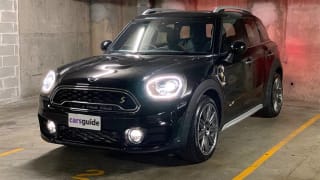When the first electrified Outlander launched here in 2014, there was no PHEV competition bar the overpriced and underwhelming BMW ActiveHybrid 3 and Mercedes-Benz C300 BlueTec Hybrid, as well as the now-forgotten Holden Volt, courtesy of Chevrolet of the USA.
Certainly nothing mainstream and attainable to be had for SUV-hungry families seeking the PHEV experience.
Astoundingly, it's 2020 and the status quo remains largely the same, despite plenty of new-model activity.
Nowadays, Hyundai offers the innovative Ioniq small car in hybrid, PHEV and EV flavours but it's hardly family-sized; larger PHEVs in sedan, hatch, coupe and/or SUV shapes from Mini, Mercedes, BMW, Volvo, Ferrari and Porsche remain out of reach for most folk; Ford's Escape PHEV has been delayed a year because of fire-related issues halting production – the same thing befell the Mitsubishi when it was new too, to be fair – and there is no sign of the Toyota RAV4 Prime PHEV.

So, yes, the Outlander PHEV ES from $47,990 before on-road costs (so within reach of regular hybrids like the bestselling Toyota RAV4 Hybrid) is great value by dint of it being the sole affordable PHEV option for families. Still. Seven years on. Go Mitsubishi.
In its twilight year before the all-new Outlander IV debuts early next year, the Diamond brand has introduced a raft of changes and improvements for the 2021 PHEV, with the sporty GSR from $52,490 leading the charge, so to speak.
The latter builds on the 2020 modifications announced a year ago – namely a larger petrol internal combustion engine (ICE, now 2.4 litres), greater generator output (now 80kW), a 1.8kWh bigger battery (now 13.8kWh) for longer range, an improved AWD system promising better handling and roadholding in adverse conditions, more safety features and an updated multimedia display – with a Bilstein premium suspension package.
Pardon the tech talk, but the latter includes inverted monotube front struts and rear shock absorbers, increased spring rates and ball-bearing front strut upper insulator assemblies, for claimed benefits to steering response, high-speed stability and ride comfort. Basically, higher-quality components that allude to a more-sophisticated driving experience.

You'll spot the GSR by its blacked-out bumper trim, grille, air intakes, tailgate garnish, mirror caps and 18-inch alloys, as well as the dark roof lining, steering wheel, gear shift and door cards. The front seats are more-heavily bolstered (powered for the driver's side), and feature micro-suede material. The tailgate is electric and there's an audio upgrade.
On the safety front there are seven airbags (front driver and passenger, side and side curtain), adaptive cruise control, Lane Departure Warning, auto high-beam headlights, autonomous emergency braking (AEB), Blind Spot Warning, Lane Change Assist, Rear Cross Traffic Alert, front and rear parking sensors, a reverse camera, rain-sensing wipers, auto on/off headlights and hill-start assist.
The GSR also has dual-zone climate control, an 8.0-inch touchscreen display, Bluetooth telephony and audio with voice control, digital radio, Apple CarPlay/Android Auto, two USB power supplies and heated/auto-fold door mirrors.
For goodies such as a sunroof, surround-view monitor, leather upholstery, LED headlights with washers and sat-nav, you'll need to stretch to the $56,490 Exceed, but that doesn't score the GSR chassis goodness. All Outlanders gain Vehicle to Home (V2H) and Vehicle to Grid (V2G) capability when bi-directional chargers arrive next year, “Prestige” paint costs $550, while a 10-year conditional warranty now applies to all Mitsubishi vehicles. More on that later.
So, the PHEV GSR is in a league of its own for value. Just remember, though, that electrification has added $15,000 to the price of the petrol-powered Outlander equivalent, the Black Edition AWD.


















